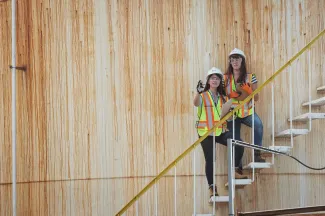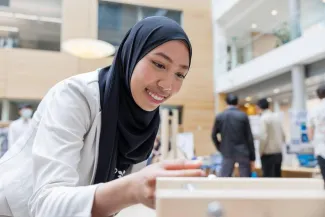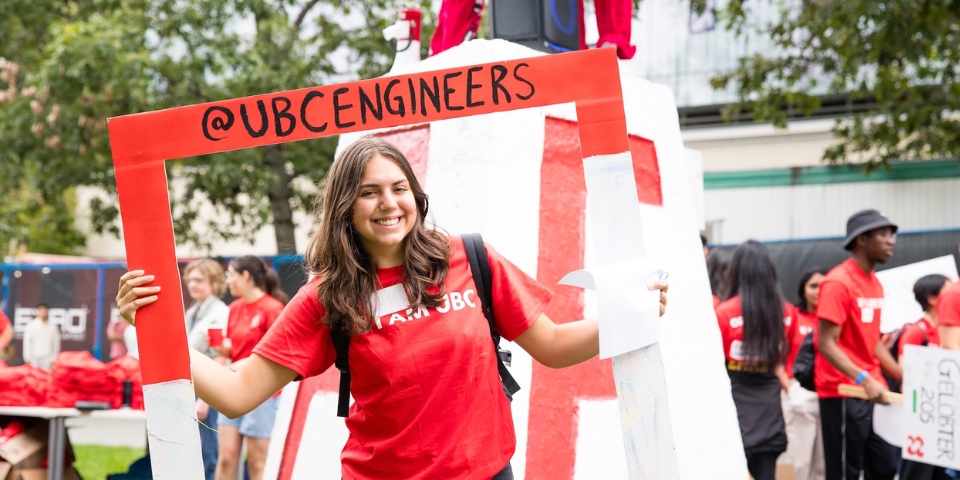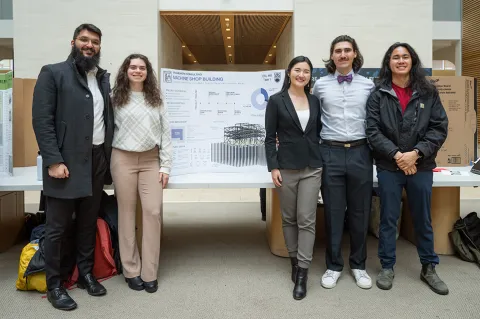
Pavan Dhillon, Liam Mazzucco, Kelly Kim, Justin Shou, Georgia Rea, Francis Soliven and Evan Song
- Degree:
- Bachelor of Applied Science
- Program:
- Campus: Vancouver
Our design solution and process
One of the most significant challenges was the site itself.
The ground conditions are very poor, with a lot of water content and a high risk of liquefaction during an earthquake. We designed a ground improvement plan consisting of over 1,200 460-mm diameter gravel columns extending down about 20 metres to provide support to the building. Our calculations show that they will provide excellent load-bearing support and resistance during an earthquake and prevent the building from experiencing catastrophic failure.
After focusing on ground improvement, the next stage was to design the above-grade structure to meet the specified loads. While we considered different building systems and types, we chose structural steel. We built on our knowledge from a course in advanced steel design to size out the components, determine placement of beams and joists, and design the cross bracing.
Our work also includes a detailed project schedule and an estimate of total projects costs, from pre-construction permits through to construction materials and labour, as well as annual costs for facility maintenance.
The process we went through is analogous to the process of submitting a proposal or business case to a building owner. We needed to make choices that were economically feasible without sacrificing the integrity of our structure.
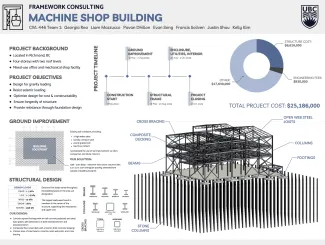
What we’re most proud of
We all put in a lot of work on individual elements and the project as a whole.
Seeing all that come together, when we integrated each of our component parts into the model, was so rewarding. We were all very excited to see it come to life and realize that we’d made it happen.
There’s great pride that comes from stepping back and realizing how much knowledge we’ve gained over the degree, both in our classes and co-op positions.
It’s sometimes hard to have an accurate sense of your skills or knowledge because civil engineering includes such a vast range of topic areas that you need to cover. But for this project, we had to apply our knowledge from so many areas, and it was rewarding to recognize that we know a lot!

